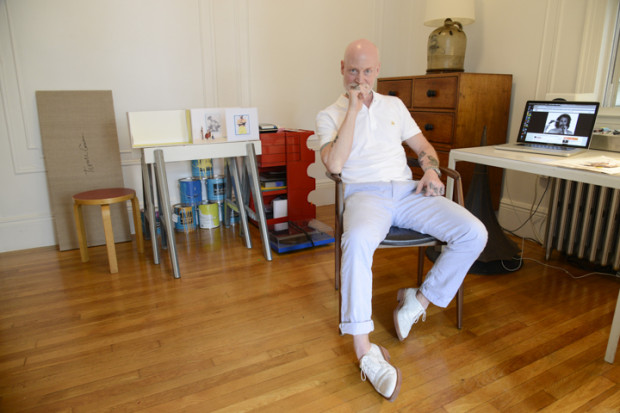
Jack Early in his studio. Photo: Christian Grattan
[Editor’s note: This week and next we’ll be featuring the work of seven artists we think you should keep an eye on. Not only are they making extraordinary work, but they’re being recognized for it as well.]
It’s possible Jack Early is the art world’s best living poet.
There’s no single interpretation for every story he tells, song he sings, and artwork he builds. A musician in his own right, Early weaves melodies into all of his semi-autobiographical installations, which use 60s and 70s culture as its raw material. Paul McCartney, Yoko Ono, the show “Laugh-In”, and Pink Floyd’s prism, all become actors to build a mood—usually, a kind of heavy-hearted sweetness. In a recent installation, WWJD, which was shown at Frieze in 2013, Early presented a Jesus Christ, from the 1970s musical “Godspell,” on a neon cross; Early’s own Led Zeppelin-esque ballad drifted over the installation’s clouds from an ipod SoundDock. The title suggests “What Would Jesus Do?” but it could just as easily be interpreted as “What Would Jack Do?” The idea of redemption resonates with Early’s story.
By now, many seasoned art-worlders are aware of at least some of that history. In the early 90s he teamed up with Rob Pruitt to create Pruitt-Early, a collective known for its installations that used the ephemera of pop culture to comment on politics, gender, race and art-making. In 1992, though, their exhibition “Red, Black, Green, Red, White and Blue”, was deemed racially insensitive. The installation coated the gallery walls in gold leaf and represented posters of Public Enemy, Janet Jackson, and Martin Luther King, Jr., among other prominent black public figures—nothing that would shock gallery-goers today. Nevertheless, that was a different time, and people were more sensitive to racially charged work; they were effectively blacklisted from the art world, and the group disbanded.
We’ve already seen Pruitt’s rise through the ranks of the art world; you only have to produce one giant line of cocaine for gallery-goers to blow at an opening for the rest to be history. That was in 1998. In 2009, after a seventeen-year absence, Early returned to the art circuit to see his own star rise once more. That history uniquely separates Early from many of the artists we’ll profile this week and next. He’s already seen more success than most in the art world—as well as bad luck. He makes our list because we believe Early is on his way to receiving his full dues as an artist and musician.
What defines a good artist?
I have a button that says “Do Your Own Thing.” It’s pinned to my painting smock.
Who and what influence your work?
I want to thank a couple of good friends that listen to me talk about ideas. They tell me the ones they get excited by, laugh at the bad ones, and give me some when I have none.
Pop culture references build in your work, particularly those pertaining to music and gayness. There were the Yoko Ono cut-outs at Fergus McCaffrey. Then Pink Floyd and an image of Jesus from “Godspell” at Frieze. And now you’ve got images of Uncle Sam at the Wythe. Even without Uncle Sam, though, the work would still read as an exploration of American identity. How has that identity evolved over the years you’ve been working as an artist and how has that affected your work?
It seems to evolve with me. When I made “WWJD (What Would Jack Do)” I was remembering how cool Jesus used to be. He had long hair, drank Boone’s Farm, and walked around barefoot. He had a rock opera on Broadway about him and he’d get mentions in tons of bands’ songs. Even a rock version of the “Lord’s Prayer” sung by an old nun playing an electric guitar shot up to number one on the charts. I bought the 45. I wanted to celebrate that time, before he was hating on gays and women’s reproductive rights. I wanted that Jesus to come back, if only for a show.
Since you’ve returned from your art-making hiatus, you’ve added music to your work—you’re even making it. How did you become involved in music?
I remember sitting in the back of my mom’s station wagon waiting for her to come out of the drug store. She left the car radio on and the Beatles song “Yesterday” was playing. “Yesterday, all my troubles seemed so far away.” I was five years old and I thought, “Ain’t that the truth.” I guess I was paying attention to music that long ago. There was a time as an artist that I thought I had lost everything. And so I turned my back to a lot. Maybe I just got lucky or maybe I had made a ton of room for it. But all of a sudden, melodies started to pop in my head. I’d walk around humming, constantly forming them into songs. I never studied music and I don’t play anything, so I was sort of in awe of it happening, a total surprise that pulled me up and made me happy. I’d have to really pay attention to them so I wouldn’t forget them while at work or at the movies. And as soon as I got home I’d hum them into a tape recorder. I didn’t have a tape recorder for a long time so I’d call friends’ answering machines and hum into those. They’d call me back and I’d say, “Ummm…can you hum that back to me?” I’d work out bridges and write lyrics but I wanted to make them more real. I didn’t know any musicians so I’d do things like introduce myself to a guy in the subway with a guitar, or tap a girl on the shoulder and ask “Is that a flute in that case?” I’d ask them if I could hum the melodies to them so that they might play it back to me on a real instrument. I was so excited to hear them. I began to meet some great musicians, made some friends, and laid down some really good stuff that way. I still make songs the same way.
You are exceptionally good at drawing connections whether they be formal or conceptual. There’s “Game of Clones,” for example, where you draw visual connections between the eyes, the nose, and expressions of various stars, and even cartoons through a series of slides. That’s overlaid with your voiceover where you talk about the coincidence of buying a Debbie Harry album in the bargain bin and then running into her on the street. When she cries, you think it’s because she’s signed her name below the sale price, but then you learn that one of her best friends, Andy Warhol, died that day. I loved that piece because you spent all this time visually building up the value of connections, only to conclude that they can be misleading and even meaningless. Is this a concern you deal with often in your own work?
Whatever has a front has a back right? First thing I wanted to be was a magician. Then I was sure I wanted to be in show business. Then I had this great idea to open a double store—it would be half plant store and half pet shop. The animals would naturally feel at home until they got adopted. Then I wanted to be an ad man. Then I wanted to be an artist.
Is making good work enough to make it in the art world?
I felt like I had made it in the art world long before I was making good work. When my parents said I could go to art school, I felt like I was making it in the art world. And when I dropped out of art school and took a bus to New York, I felt like I was making it in the art world. When I got a job as an assistant to Richard Artschwager, I felt like I was making it in the art world. And when I left Artschwager to do my own thing, I felt like I was making it in the art world. Just being in the art world is making it…even when you’re painting houses to make the rent! Do all that stuff and then go make some good artwork.
Do you see yourself living in New York for the next five to ten years?
I see a little wooden house with a tin roof, a screened-in front porch, and a studio with lots of light in the backyard.
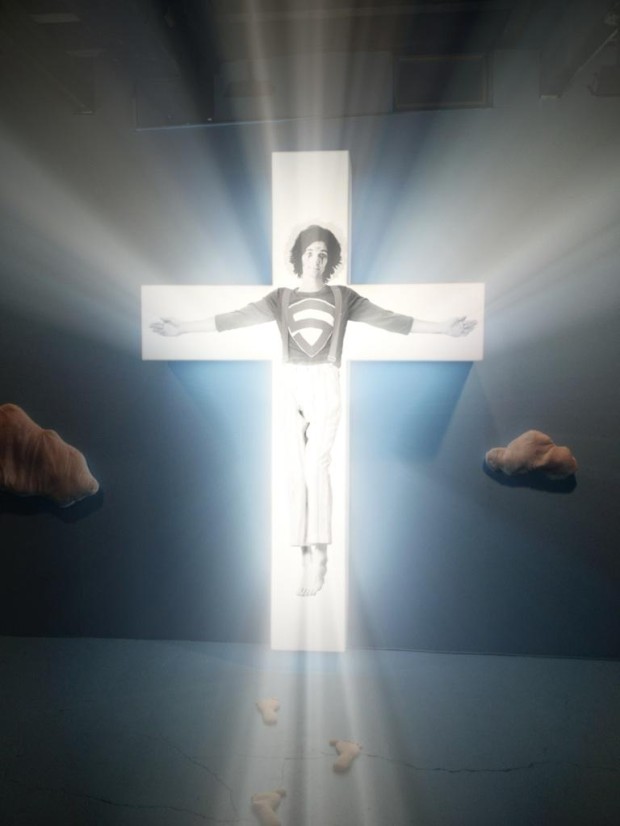
Jack Early, WWJD, 2013, Southfirst, New York
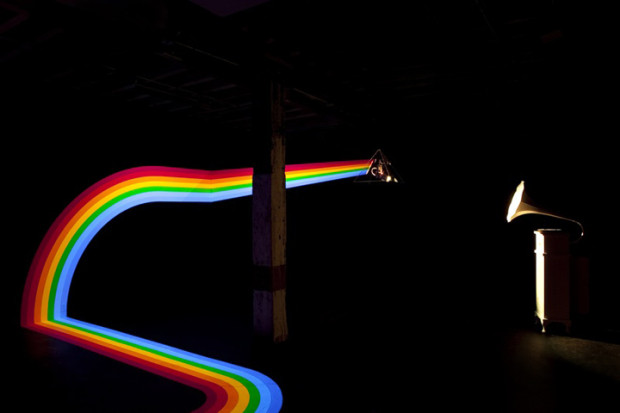
Jack Early, “Jack Early’s Ear Candy Machine” (detail), Southfirst, New York

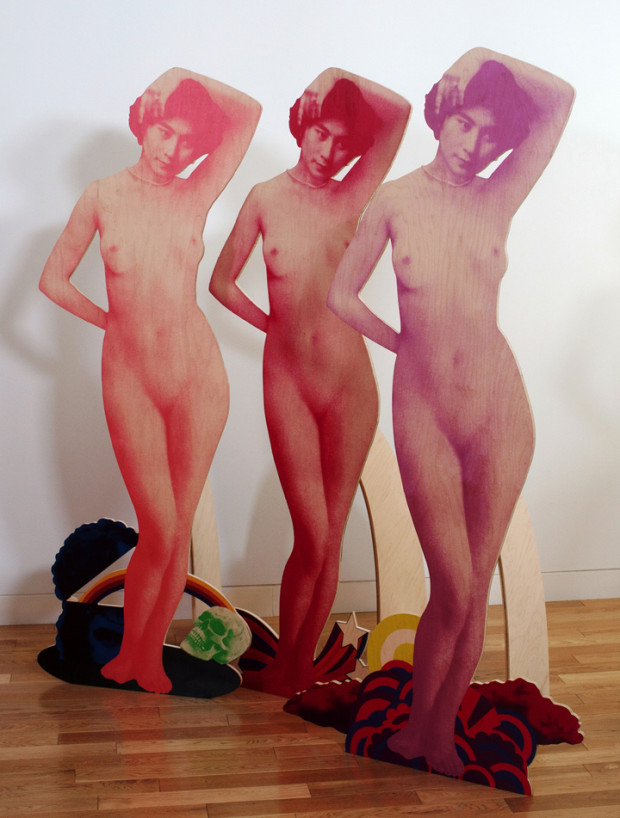
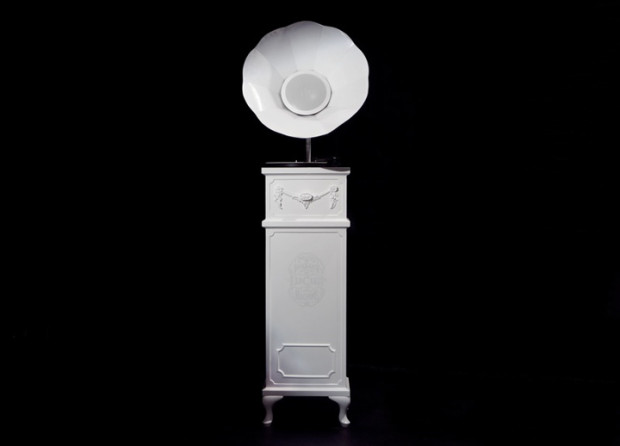
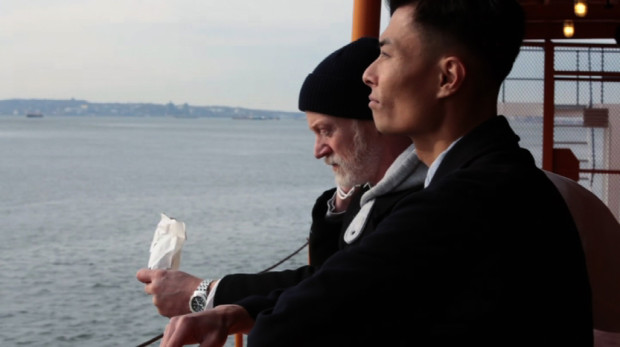
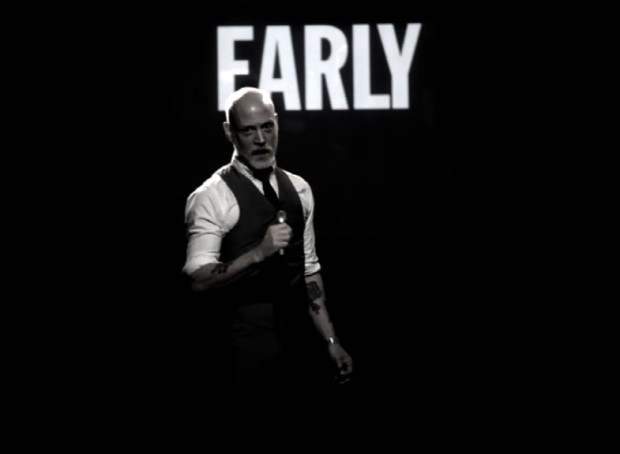

Comments on this entry are closed.